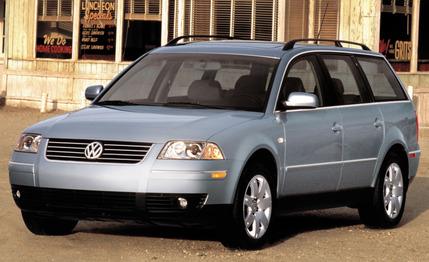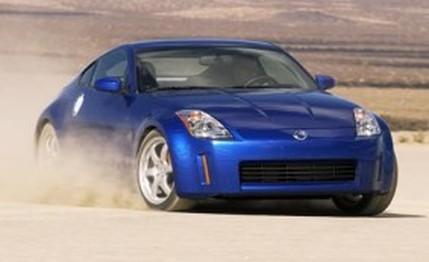
 First Drive Review
First Drive Review
Perhaps you missed it, but two years ago, Ferdinand Piech, Volkswagen's icy-eyed ruler, was quoted by Fortune magazine as saying he considers the Passat, in its current shape, to be " the most perfect Volkswagen ever."
When Mr. Piech speaks, word has it the guys in the good suits at the Wolfsburg plant snap to and salute. Or duck. So that might be the reason this Passat, the first makeover of the enlarged sedan that was introduced to gushing applause in the fall of 1997, is very much unchanged. If you don't count the chrome trim that has been applied as miserly as eyeliner at a Mormon beauty pageant -- little strips of it to the grille, as window trim, as shiny highlights on the door protectors, in gleaming thin lines in the center of the bumpers, in spaghetti-like strands around the dash gauges -- this third Passat is a twin of the last one.
We think Piech is even smarter than the guy who invented the mounted bass that sings. His roomy, sleek sedan is a star in Europe, and sales here, where VW a decade ago had to perform a rendition of Lazarus emerging from a dung pile of marketing mistakes and forgettable cars, have gone from 14,868 Passats in '97, to 39,272 in '98, to 68,151 in '99, and were on track at this writing to score 85,000 in 2000.
The car, in sedan and wagon form, still gets soundly walloped at the checkout counter by the entrenched Toyota Camrys and Honda Accords -- about five of each are bought here for every Passat sold. This despite the fact that the first time it was in a C/D comparison of 10 $25,000 sedans it won ("Salt-of-the-Earth Sedans," June 1998).
So what's new with this Passat? Do clear glass headlights ring your bell? How about an increase in length of 1.1 inches? Okay, it's got window airbags as standard equipment, and torsional rigidity is 10 percent better. Plus, the central tunnel console has been reworked, so have the taillights, and the new cup holders that have been moved to the center console look swell. And VW swears that no fewer than 2315 of the Passat's parts are "newly developed."


Okay, this will get your attention. The Passat comes to the U.S. with just two engine choices -- a DOHC 2.8-liter V-6 with five valves per cylinder and the whiz-bang 1.8-liter turbocharged four. Either can be had with a choice of five-speed manual or automatic transmission. Piech thinks he can sell 490,000 Passats worldwide this year, and as a carrot to coax U.S. sales upward to 110,000 units, his engineers have squeezed another 20 horsepressure out of that little blown four-cylinder, upping the full-honk quotient from 150 to 170, ever nearer to the V-6's adequate but not neck-snapping 190 horses. We already think VW is daffy by selling the V-6 GLS with all-wheel drive for just about what you'd pay for the more elegant, high-panache Audi A4. (Piech explains this curious marketing strategy, which has been likened to cannibalism, this way: The Audi is for the sporting person who is after the excitement of new technology, while the top-of-the-line V-6 Passat with all-wheel drive tantalizes the conservative who is drawn to luxury elements such as leather and wood, so, no, the Passat is not gobbling up sales that might have gone to its Audi sisterships.) And waiting off-stage for a debut sometime this fall is another model sure to increase Passat sales: a luxury version powered by a V-8 of perhaps 275 hp.
We drove the new chromed-up 2001 model at its European introduction (it went on sale here February 15), but since the V-6 carries over unchanged and the boosted-up America-bound four-cylinder with the extra 20 horses had not yet materialized, our driving impressions were unchanged over the 2000 model, which is to say we're still mightily impressed by a turbocharged, front-drive sedan that does not torque-steer and that comes without the lunge and whistle under hard acceleration common to other turbos. Space inside verges on the grand, the chairs are excellent, the interior design and execution sleek and elegant, and the ride is taut but supple enough to soak up bumps.
Expect an across-the-board price hike of $300, which should put the base GLS at about $22,000, the V-6 at $24,500, and the topped-out GLX 4Motion with manumatic Tiptronic at roughly $32,000. If the $300 is off-putting, remember that VW expects to have a couple weeks' worth of old Passats on hand. Presumably, Mr. Piech thinks both of them are the best-ever Passat.